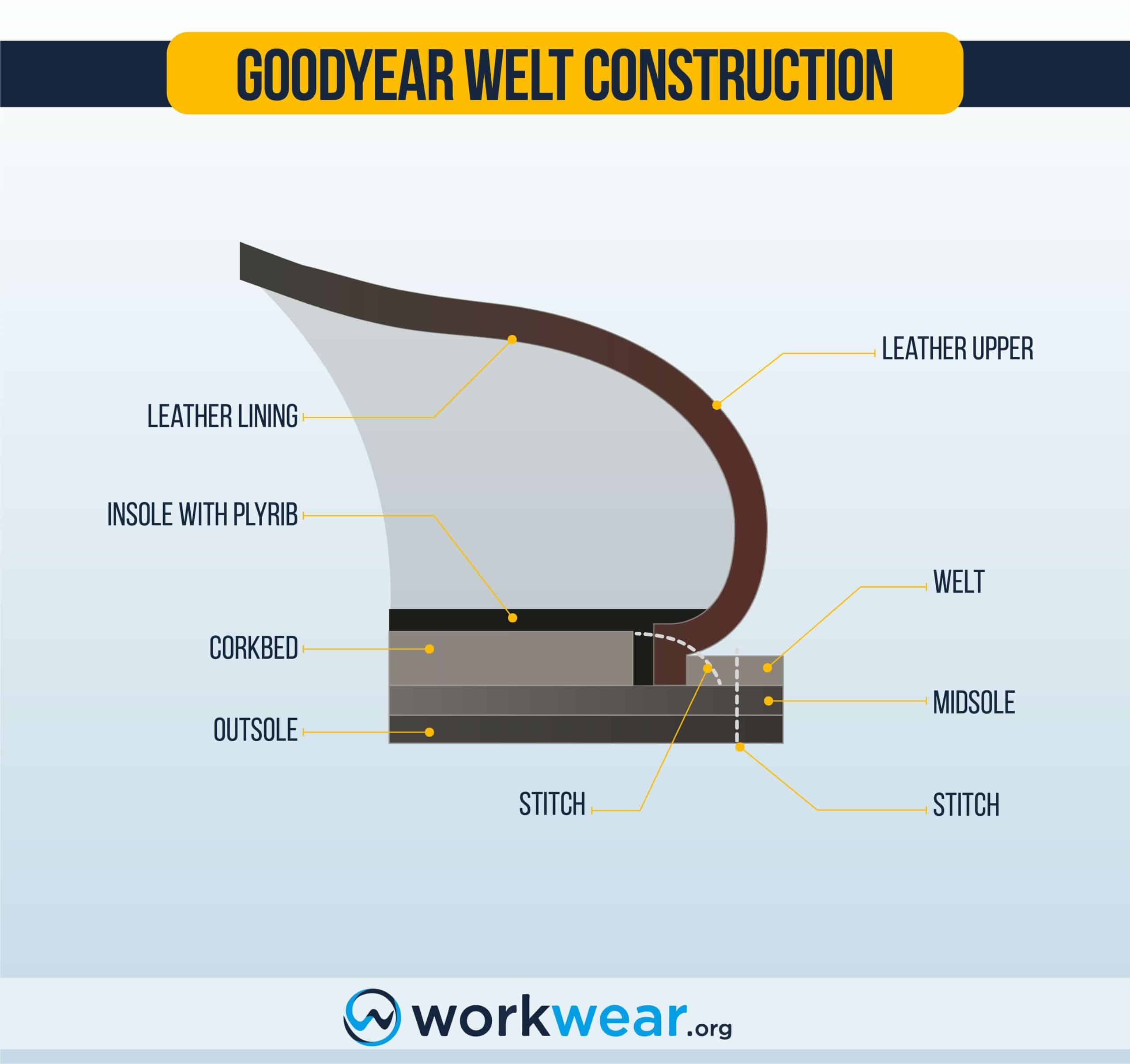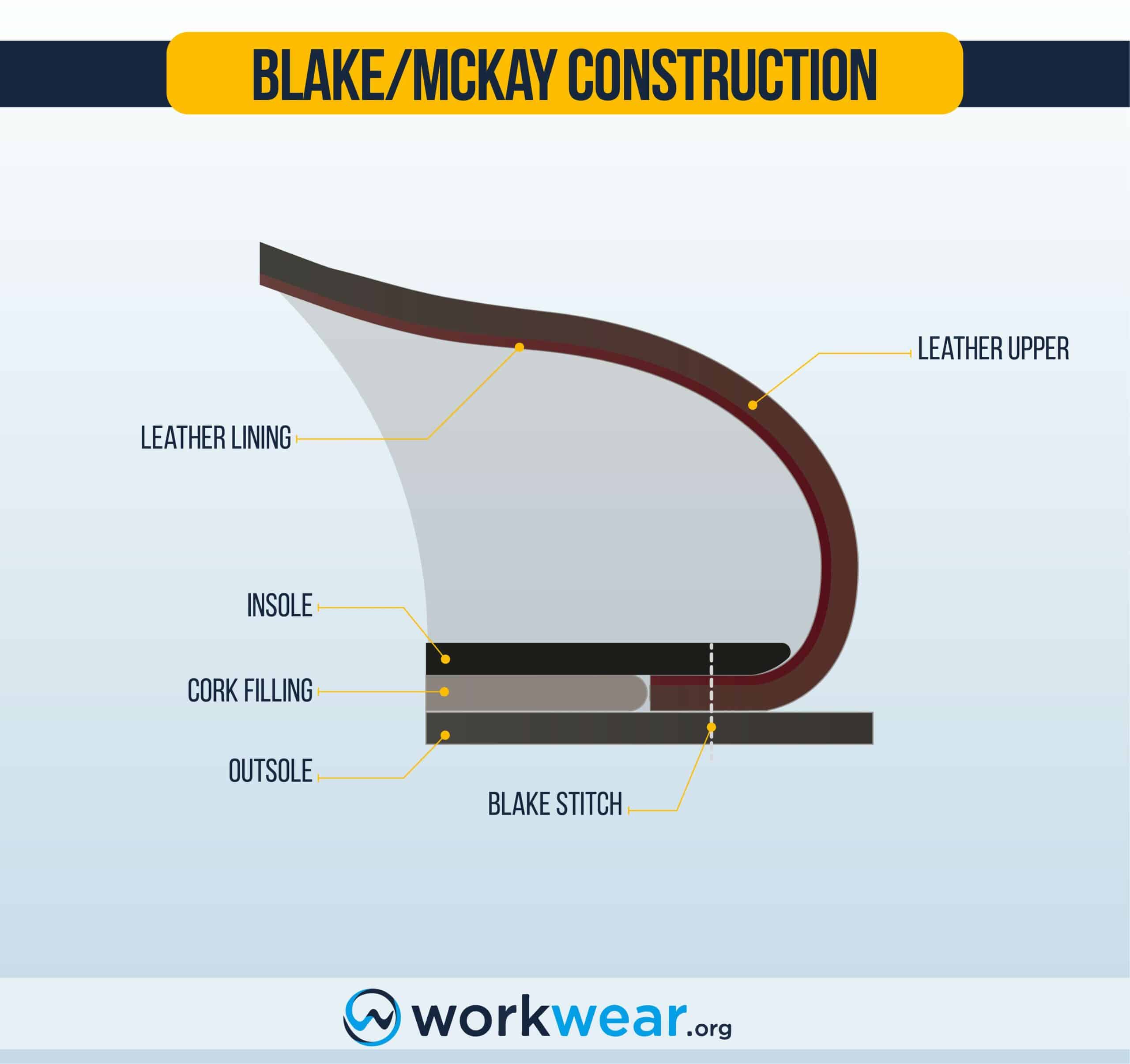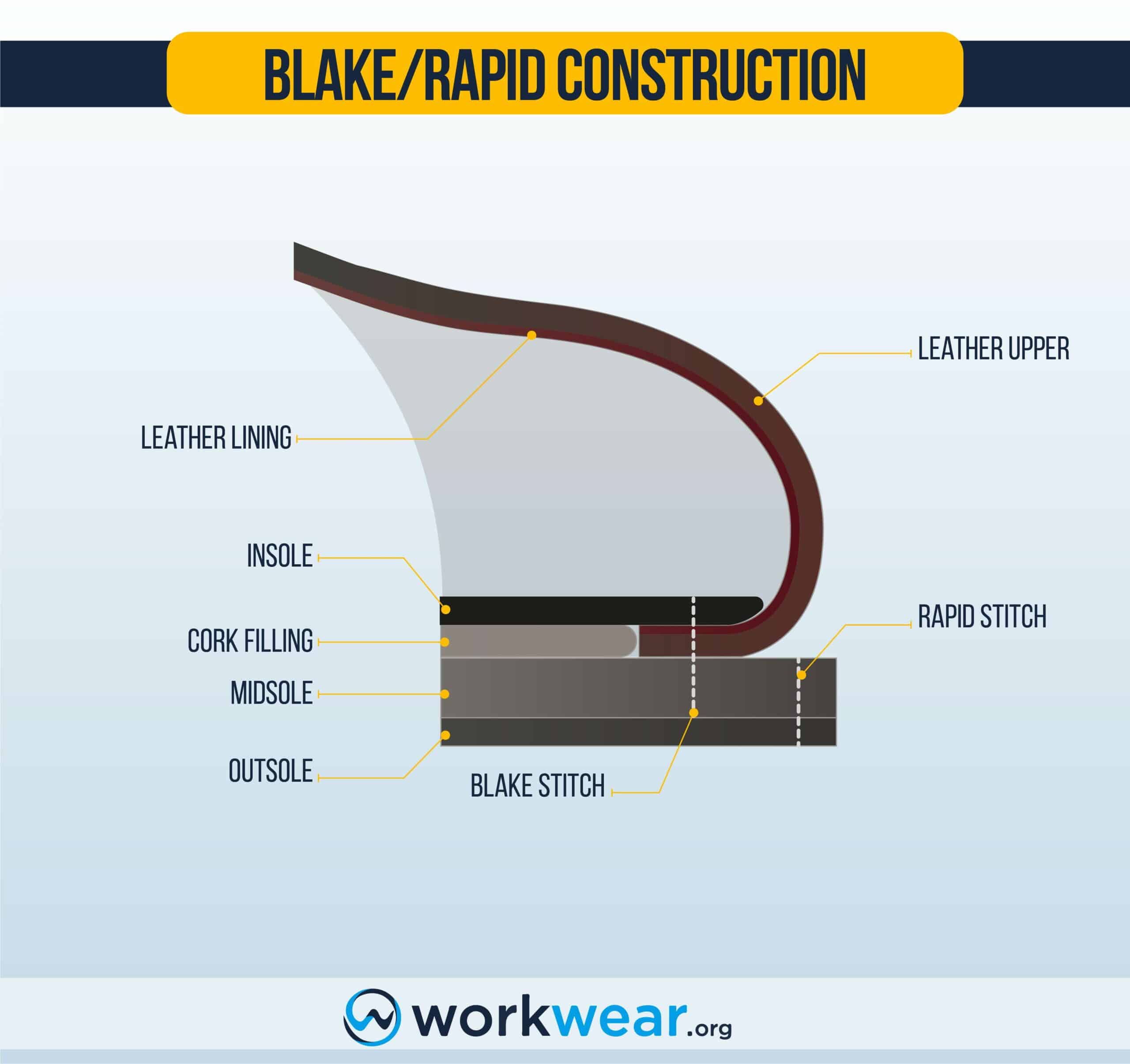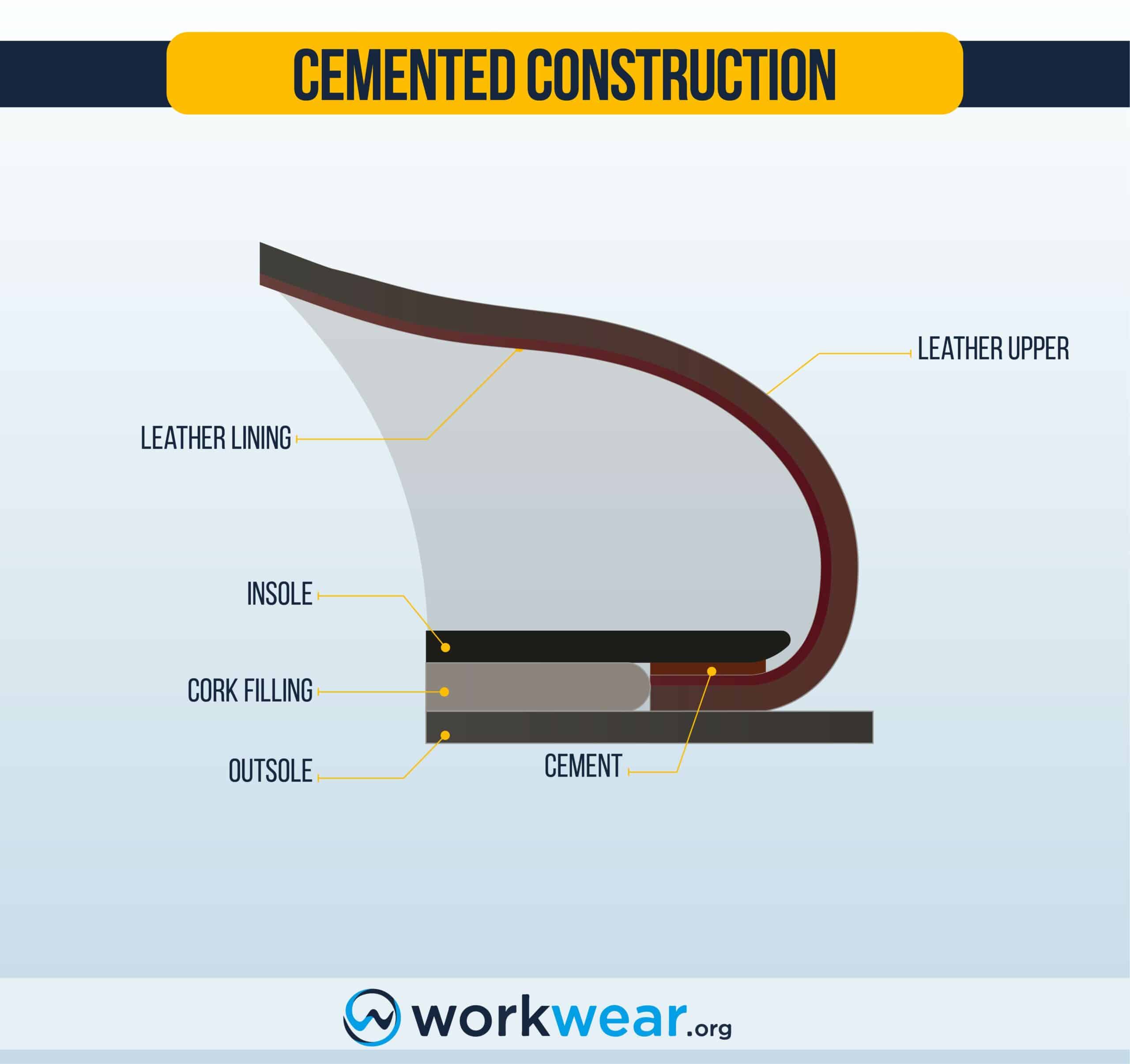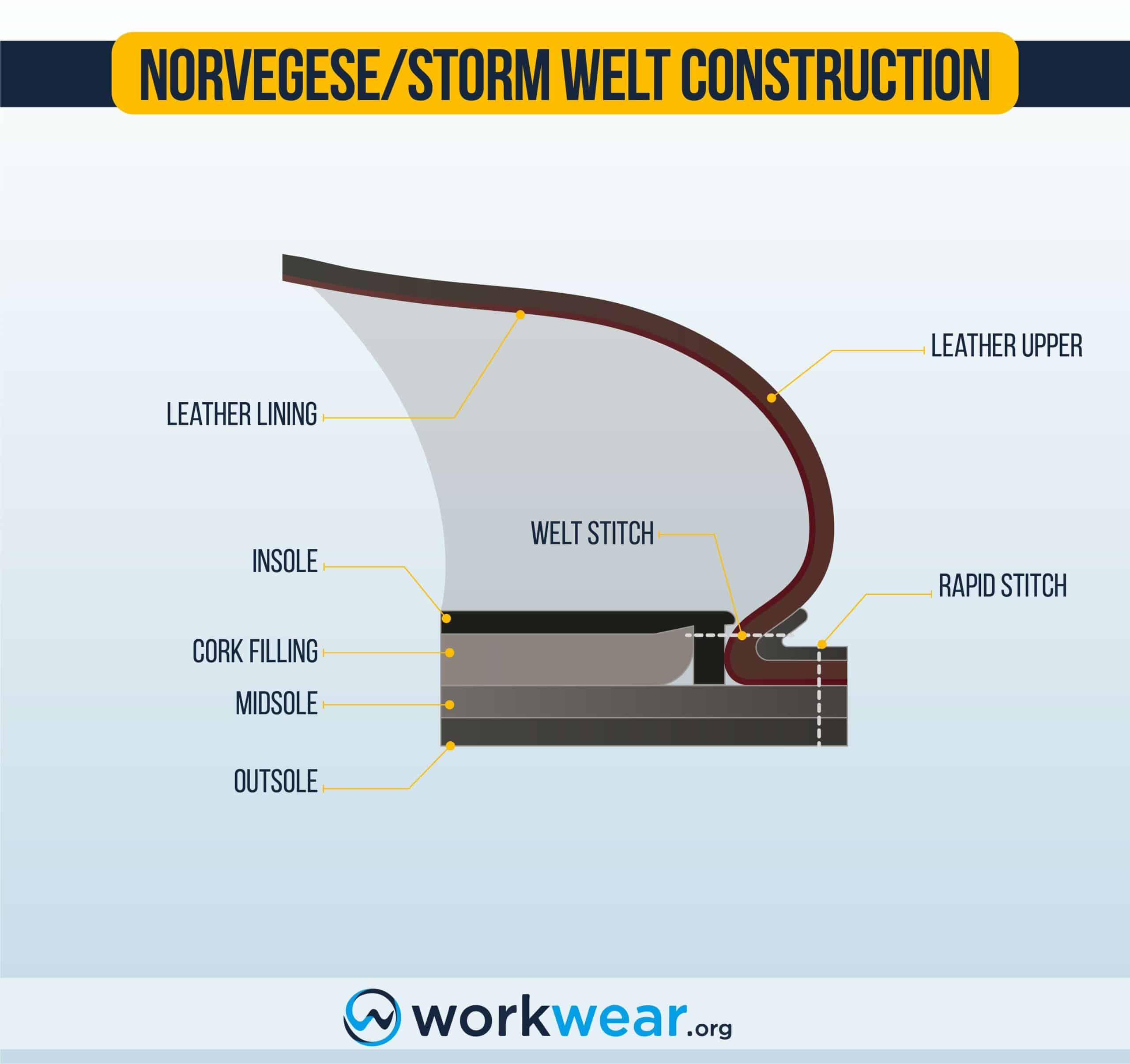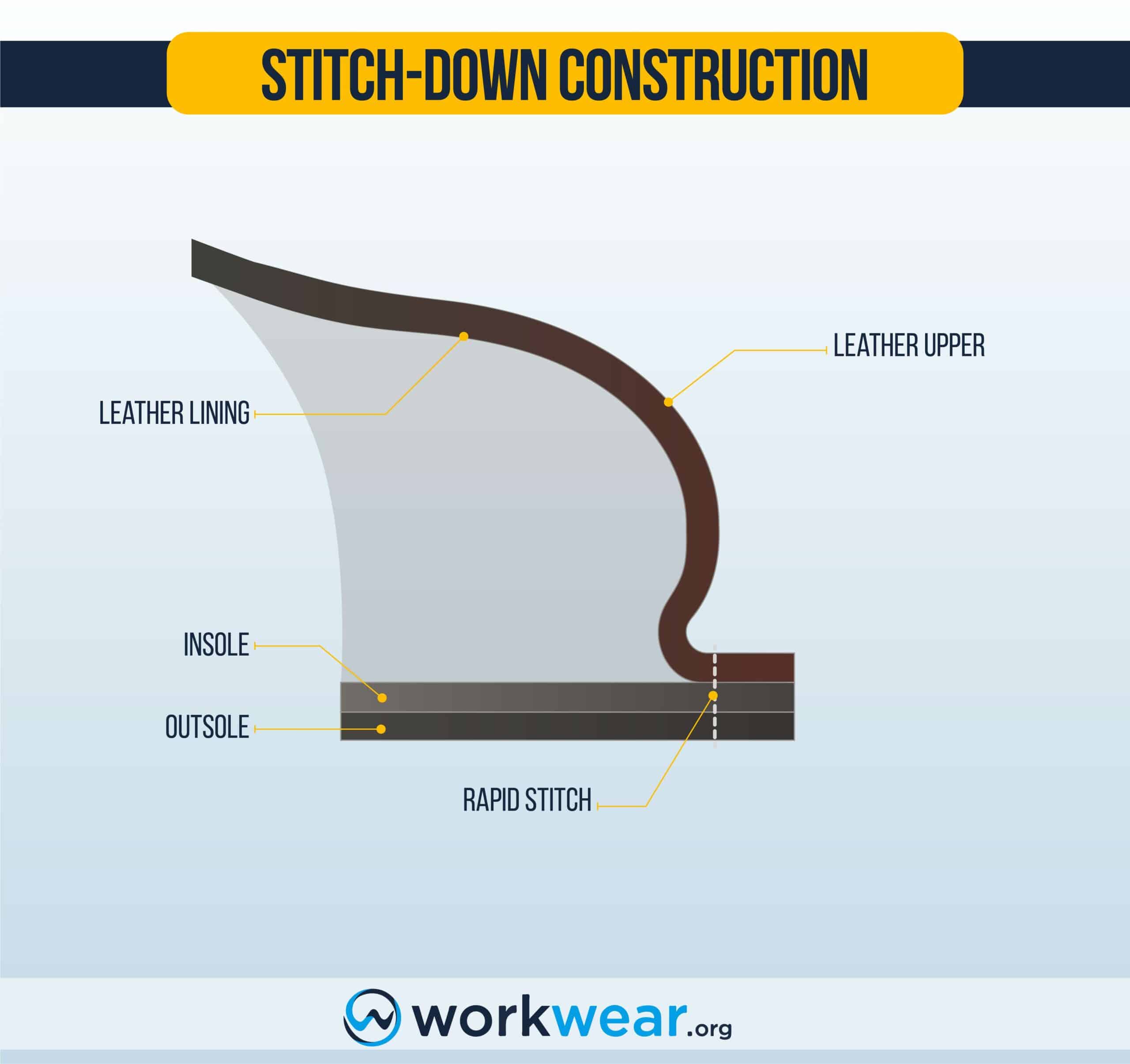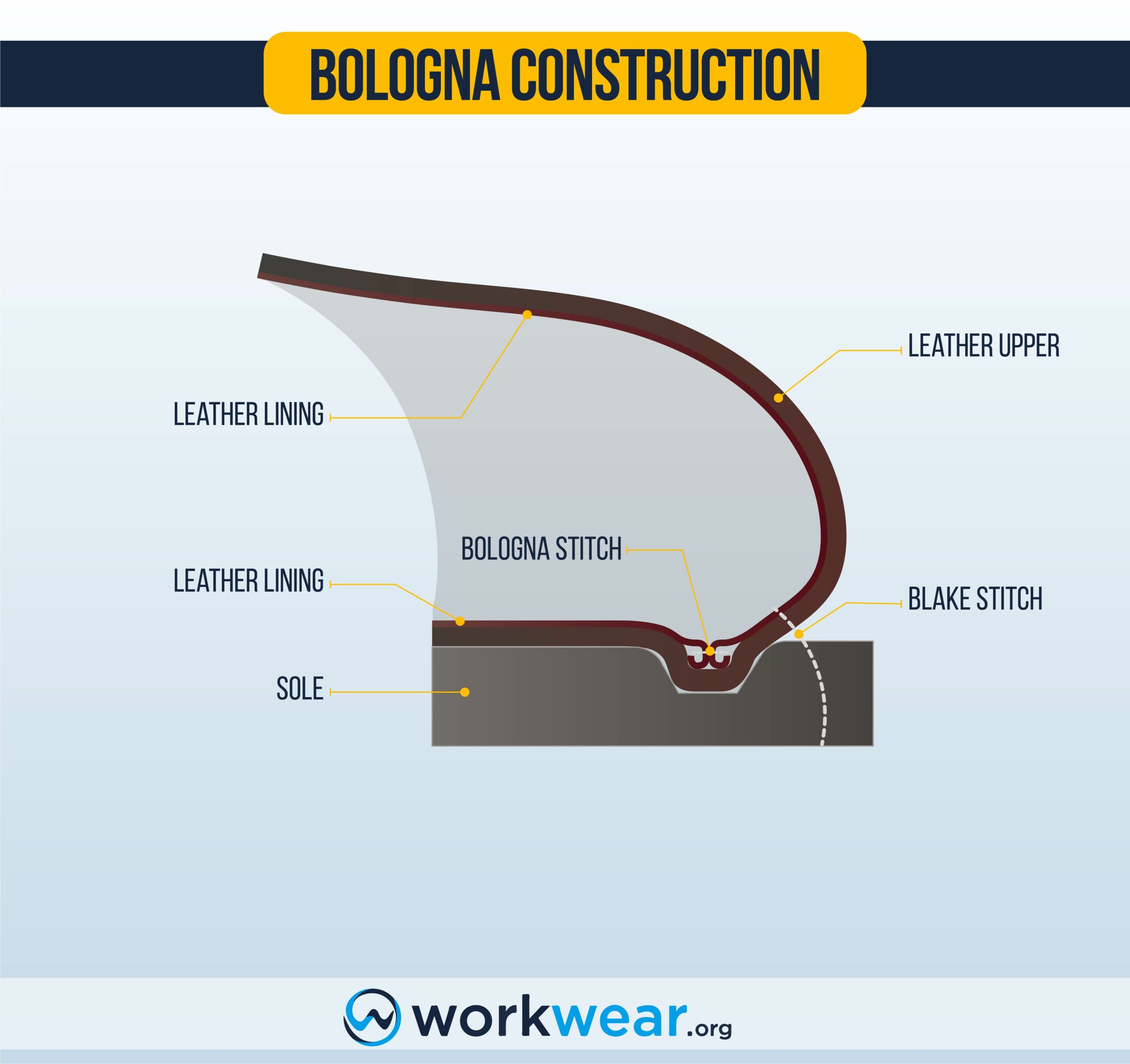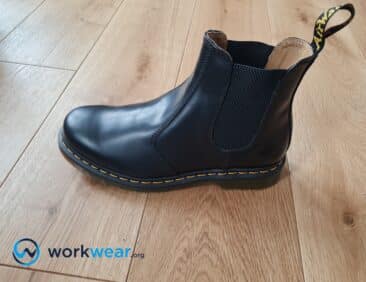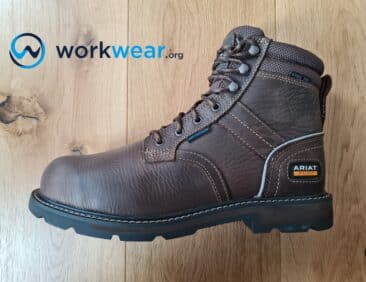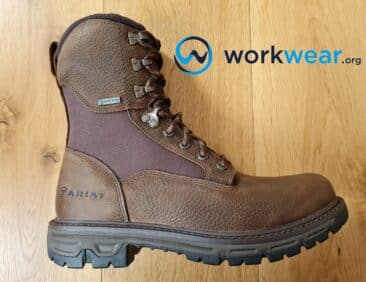Main types of Sole Stitching Explained
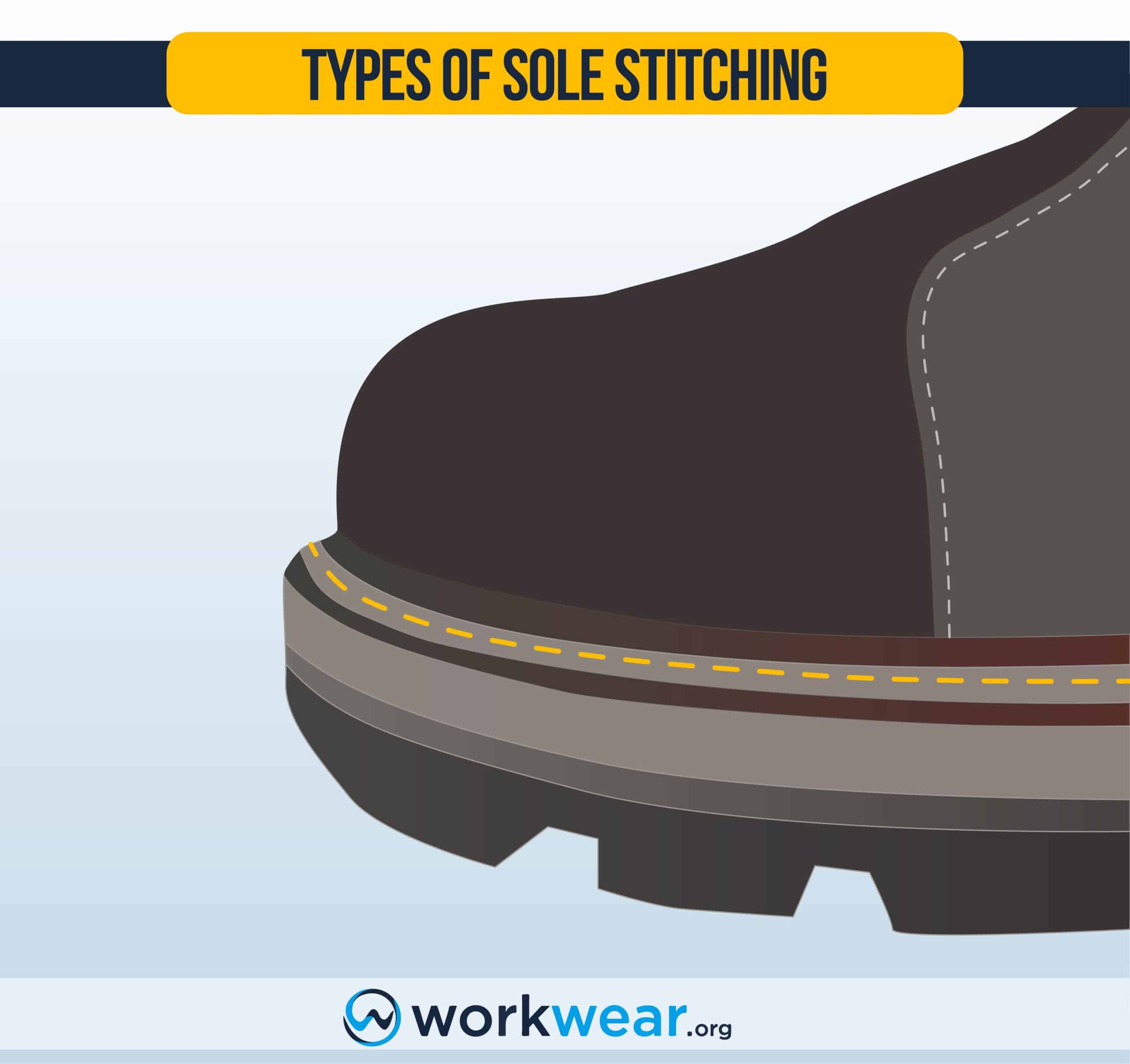
When choosing boots and shoes, the material (of the upper) is probably at the top of the list of things you consider before making a purchase. Of course, the footwear’s design and price are some of the main considerations, but you may overlook another essential factor – the shoe’s construction method and how the sole is stitched to the upper.
The method used for stitching the sole may not be the first one you think of when choosing your shoes and boots, but it should be considered as it significantly impacts the footwear’s appearance and function.
In this article, we’ll learn about the different boot and shoe construction types – and how the soles are stitched to the upper. This way, you can be empowered with the right information, enabling you to easily choose the boots or shoes with the sole stitching method most appropriate for your needs.
Key Takeaways
- Different methods of sole stitching deliver their benefits and drawbacks to boots and shoes. It’s worth knowing these construction methods as doing so can make finding and fully maximizing the best footwear choices easier.
- Goodyear Welt construction offers superb durability and water resistance and can be resoled – but it makes footwear bulky, less flexible, and more expensive. Meanwhile, Blake/McKay construction is more affordable, elegant, lightweight, and flexible footwear that can be resoled – but water resistance is weak, and the outsoles are comparatively thin and unsupportive.
- Cement construction is a simple and affordable way of stitching the sole to the upper, but the result only lasts for a while and can’t be resoled. Bologna construction is lightweight, comfortable, and flexible – but it’s also not very durable and can quickly allow liquids to penetrate. Meanwhile, vulcanized stitching creates flexible and durable structures, but it’s ideal only for casual (or sports) footwear.
- Storm Welt construction delivers exceptional waterproofing and results in durable footwear, though it’s quite hard to find and creates bulky boots and shoes. Blake Rapid’s construction results in relatively strong, durable, and affordable shoes and boots, but they’re also less flexible (compared to Blake’s sole stitching).
- Stitch-down construction makes boots and shoes flexible, water resistant, and durable, although the structures are more difficult to resole and costlier than Goodyear Welt. Meanwhile, hand-welted construction is ideal for custom-made footwear, but as expected, it’s expensive to stitch the sole to the upper.
Construction Methods for Stitching the Sole
Goodyear Welt
Shoes and boots with Goodyear Welt construction are some of the most durable options available today. This method of attaching the sole to the upper comes with a considerable cost because it requires a lot of work. Still, the payoff is worth the higher price for footwear offering exceptional durability. This method is easily identifiable by the leather welt that goes around the shoe’s perimeter. Two stitches are needed for this method: the first to attach the upper and welt to the ribbing of the insole, and the second to attach the welt to the midsole to the outsole.
Pros
- Very durable
- Can be resoled
- Strong water resistance
Cons
- High price
- It makes the shoes or boots look bulky
- Less flexible
Blake/McKay
Often referred to as “Blake Stitch”, this method is one of the first shoe construction methods to use a machine. Lyman Reed Blake was the one who invented the machine, but he eventually sold the patent to Gordon McKay – which explains the alternate term.
This method is simpler and requires less work than Goodyear Welt, resulting in lower costs for the boots or shoes made with this method. Without using a welt, the upper is wrapped around the insole, and these two components are then attached to the outsole using a single stitch.
Pros
- Sleek, elegant profile
- Lightweight and flexible
- Costs less than Goodyear Welt
- Can be resoled
Cons
- Weak water resistance
- Weak water resistance
- Thinner outsoles may cause discomfort
Blake Rapid
Blake’s rapid construction combines the best aspects of Goodyear Welt and Blake’s sole stitching methods. The same Blake stitch works through the insole, adding a middle layer of welt that is stitched to the outsole using a machine. The construction is often showcased in more rugged boots and shoes with bulkier features, making them ideal for tough conditions that may need enhanced liquid resistance.
Pros
- Stronger water resistance and durability than Blake construction
- More affordable than Goodyear Welt
Cons
- Less flexible than Blake stitch construction
Cement
Cement construction is the easiest way to attach the upper to the sole. The bond is made with an adhesive, so the upper is glued onto the sole. C cement-constructed boots and shoes don’t have any stitching, although some manufacturers place faux stitching on the sole to give a semblance of increased durability.
Once the adhesive fails, the sole can’t be re-attached to the upper anymore – and the shoes or boots will need to be replaced.
Footwear options made with this method are affordable, but since they don’t last long, the overall cost is higher than going for more durable choices.
Pros
- Simple process
- Very affordable
Cons
- Not durable
- It can’t be resolved
Storm Welt (Norwegian)
Also referred to as the Norwegian construction, the storm welt method is similar to Goodyear welt, with a few enhancements thrown in. Instead of folding in, the upper, rib, and welt in storm welt construction are curved outwards. In addition, the stitching that secures these components to the outsole is visible from the outside.
This creates much stronger waterproofing as liquids are prevented from seeping into the shoes or boots through the seam. The enhanced liquid resistance makes this method of sole stitching ideal for snow boots and other footwear options for wet conditions.
However, boots and shoes with storm-welt construction are rare, so finding them can be a bit of a challenge.
Pros
- Strong waterproofing
- Durable
Cons
- Bulky
- Quite hard to find
Stitch-down
Stitch-down is a traditional shoe construction often seen in desert boots and children’s shoes because of its comfort factor – but it’s also utilized in some of the most hard-wearing work boots in the market.
It uses a distinctive strategy as the uppers are pulled over the midsole and outsole to where they are stitched (using quick stitch) without a welt. The outsole is cemented with an adhesive and then nailed (if a heel is used). This method of sole stitching results in good waterproofing as liquids are allowed to flow outwards (with how the uppers are attached) instead of into the footwear.
Pros
- Flexible and comfortable
- Good water resistance
- Durable
Cons
- Harder to resolve than Goodyear Welt
- Typically, more expensive than Goodyear Welt
Bologna
Bologna works almost exactly like Blake’s construction but with a twist. The uppers and lining are wrapped around the bottom, and the sole is attached to the tube-like structure. This method delivers superb comfort as the foot touches only the soft upper material and not the sole directly. The construction is also flexible, adding to the overall comfortable experience – such as the ones that can be enjoyed when using moccasins.
Pros
- Comfortable and flexible
- Lightweight
Cons
- Weak water resistance
- Not as durable as Blake or Goodyear Welt
Comparison Table
|
Advantages |
Disadvantages |
Uses |
|
|---|---|---|---|
| Goodyear Welt |
|
|
|
| Blake/McKay |
|
|
|
| Blake Rapid |
|
|
|
| Cement |
|
|
|
| Storm Welt (Norwegian) |
|
|
|
| Stitch-down |
|
|
|
| Bologna |
|
|
|
Conclusion
Shoes and boots are built using different construction methods that offer key advantages and disadvantages. Knowing these methods of sole stitching can help you choose the product that will be most appropriate and beneficial to your needs. Goodyear Welt construction is very durable, has strong water resistance, and can be resoled – but this method results in costly, less flexible, and bulky shoes and boots. Blake or McKay construction creates elegant footwear options that are lightweight, flexible, can be resoled, and more affordable than Goodyear Welt – but liquids can quickly seep in, and the thinner outsoles aren’t very comfortable or supportive. Blake Rapid construction produces stronger and more durable boots and shoes (compared to the Blake method). It is more affordable than Goodyear Welt but less flexible than Blake/McKay’s construction footwear. Cement construction is straightforward and affordable, but it doesn’t last long and can’t be resolved. Storm Welt construction is durable and offers strong waterproofing, but it’s not that common and produces bulky footwear. Vulcanized construction offers flexibility and durability, although it’s appropriate only for casual footwear. Stitch-down construction results in boots and shoes that are durable, comfortably flexible, and with good water resistance -but it’s harder to resolve and more expensive than Goodyear Welt. Bologna construction is comfortably flexible and lightweight, although it’s not very durable and has weak liquid resistance. Finally, hand-welting creates beautiful, custom-made footwear, but as expected, it’s quite expensive.
FAQs
- How do these features help protect and support workers in demanding work environments?
- The durable materials used in quality work pants can withstand the rigors of repeated bending, kneeling, and moving in various environments. The reinforced pockets, hems, and other areas help keep the pants from getting ripped or torn over time, providing extra protection for workers. In addition, the water-resistant stretch fabric helps keep the pants dry and comfortable while providing support for the knees and joints. Finally, features like cell phone pockets, multipurpose cargo pockets, knee pad pockets, reinforced knee panels, and reflective trim all help to improve visibility in low-light or nighttime conditions, making workers safer and better protected.
- Are work pants fire-resistant?
- Several work pants are designed to be fire-resistant. These typically feature fabric made from materials like Nomex or Kevlar, which help protect from heat and flames. Some other features that may be present in fire-resistant work pants include flexible material for ease of movement, moisture-wicking technologies, and reflective detailing for enhanced visibility. Additionally, some work pants are designed specifically for use in hazardous environments or with certain types of equipment, such as flame-resistant jeans for workers in the oil and gas industry, puncture-resistant pants for construction workers handling sharp tools or materials, or high-visibility pants for workers near traffic areas.
- How can I best clean these pants?
- There are a few different approaches you can take when cleaning work pants, depending on the type of material and fabric that they are made from. It is generally recommended to use cool water and mild detergents or cleaning solutions for most work pant materials, as hot water and harsh chemicals can cause damage over time. You may also want to use a special stain-removing product or spot treatment for especially tough stains, and look for features like moisture-wicking or wrinkle-resistant fabric to help keep your work pants looking clean and new for longer. Additionally, some materials may be dry cleaned or laundered using a gentle machine cycle and cooler temperatures.
- Can I wear carpenter or cargo pants instead of work pants?
- There are some similarities between carpenter pants and work pants, as both are often made from durable, high-quality materials designed to withstand heavy use demands. However, these two types of pants also have some key differences. For example, carpenter pants tend to be looser-fitting and roomier in the leg area, making them more comfortable working in tight or confined spaces. They may also be made from different materials than standard work pants, such as heavyweight cotton canvas and denim, and may feature additional features like hammer loops and tool pockets. On the other hand, cargo pants are typically designed with a slimmer fit, with features geared towards workers who require a lot of functionality and utility, such as multiple pockets and reinforced knee areas. Ultimately, the right type of pants for your work environment will depend on your individual needs and preferences. So it is best to consider the specific requirements of your job and workplace when deciding which type of work pants is right for you.
